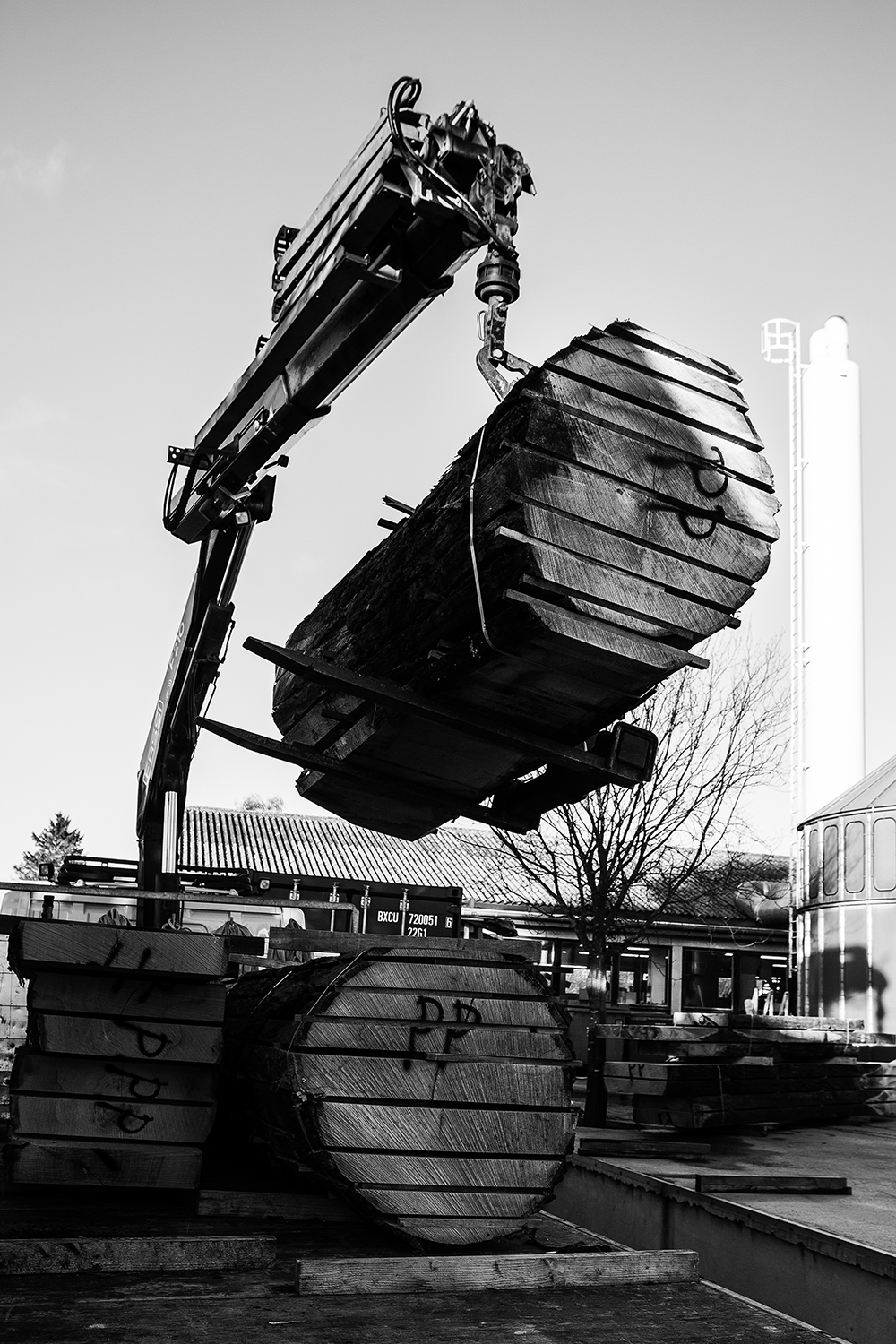
Each wooden piece must be cut and prepared, and since wood is an organic material, it is important to treat it properly from the beginning. As such, the raw cutting and preparation work is essential to the durability of the finished product.
Each tree is carefully selected with only the highest quality being purchased. Our standards are unique for the furniture industry.

Generally, we use two different tree sizes. For the majority of our production, we use the same size of timber as the rest of the established furniture industry. These trees are about 80-100 years old when felled.
Usually, a large number of trees this age are harvested for industry use every year as part of the regular sustainable forest management system. They are cut into planks of 1½, 1¾, 2, or 2½ inches and conditioned to about 10-12% of natural moisture content. Before being delivered to our workshop each log is tagged and separated from the others.
Designs like the Round, Cow Horn, Valet, Swivel, and Bull Chair, however, require trees that are much larger than those used as standard.
Fortunately, whenever an area of trees is felled in the regular sustainable deforestation process a few of the most healthy trees are left standing as a shelter for the new young trees that will grow in the felled area. These are called ‘shelter tree.

Shelter trees are usually felled individually and only when they show signs of fatigue and begin to die. For many of the Nordic hard woods, this starts to occur when they have passed around 150-200 years of age depending on species and conditions.
We cannot simply order a shelter tree due to this natural cycle and it is only when these trees are individually felled that we can buy them from the forest. For this reason and due to their large size the costs of working with shelter trees are far higher than those for production using standard timber.
The size of shelter trees can vary widely but on average each log is about 5-7 meters long and about 1-1½ meters wide. We only get one log of this size from one shelter tree.
Whenever shelter trees are felled we take them immediately to the sawmill to be cut into 3, 4, and 5-inch planks. The freshly cut planks are then brought directly to our workshop.


While the planks are still naturally moist we cut out and pair the raw pieces needed for a particular chair.
Cutting the raw parts out of freshly felled trees is necessary to reduce the conditioning time and the risk of cracks or fungus occurring in the conditioning process, which is quite considerable for large 5 inch thick planks.
It is important, therefore, that the back and the armrests are cut out before the extensive process of conditioning the wood begins. These smaller parts can be conditioned within approximately two years reducing the risk of cracking or of fungus developing.
Making furniture of the quality such as the Round Chair requires considerable investment up to two years in advance of selling it to a customer.

Upon the initial preparations and cutting each piece into raw dimensions, all wood is conditioned to below 6% moisture content to optimize stability. Proper and thorough conditioning is decisive to the quality of the finished product.
It is a very time-consuming process controlled solely by the nature of the wood. An attempt to shortcut or speed up the conditioning process will prove counterproductive in the long run.